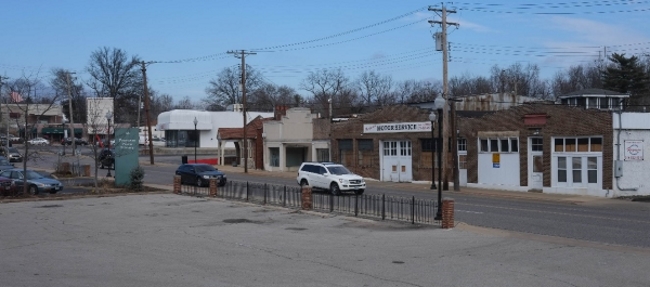The New Geography of Suburbia
Highlights for June 11th
In this newsletter, we turn our attention to the suburbs. And for good reason, since that’s where slightly over half of U.S. residents currently live. You may have noticed that today’s suburban dwellers increasingly don’t conform to the mythic image of the suburbanite. By 2013, 61 percent of all immigrants to the U.S. lived in the suburbs, and that percentage continues to increase. And, rather than the prized destination of prolonged efforts to escape urban ghettos, many of these suburbs are where immigrants settle upon arrival. Partly as a result of these trends, the last census showed suburban poverty to have grown at more than twice the rate of urban poverty.
In the current issue of New Labor Forum, Phil A. Neel describes this new suburban landscape: where once there were only bedrooms and commuter trains, now there are factories, warehouses, distribution centers, and sometimes blasted waste-lands lacking many of the essential services, like child care and public transportation, more common to cities. He argues that one need look no further than Ferguson, Missouri for evidence that conditions now prevalent in suburbs will contain new challenges, as well as new possibilities, to spur movements for social and economic justice. For all of these reasons, anyone interested in the nation’s social and political future would do well to study suburbia. Toward that end, we also offer a recent report on the challenges of suburban poverty by Margaret Weir, as well as a review of Lorrie Frasure-Yokely’s Racial and Ethnic Politics in American Suburbs, the 2016 winner of two national book awards.
The New Geography of Suburbia
By Phil A. Neel/ New Labor Forum
The suburb, rather than the central city or the “urban” slum, will prove itself among the most volatile sites of political unrest over the next several decades. For the same reason, these will be the places that hold the most potential to change the dreary trajectory of political organizing in the country. As the center collapses, both left and right will find the rapidly changing terrain of the U.S. suburb to be a key battlefield in future political conflict, rather than the well-trod urban districts so favored by activists…
Read the full article here.
The Rising Challenge of Poverty in the Suburbs
By Margaret Weir/ Scholars Strategy Network
 Cities have long been pictured as filled with underemployed poor people sitting on the stoops of dilapidated apartments, while suburbs are romanticized as preserves for middle-class families with houses, steady jobs, and access to good schools. The notion of suburbs without any poor people was always mythical – but now it is seriously out of date. Today, more than forty percent of America’s poor live in suburbs and declining cities near metropolises. We need a fresh look at these people and the new challenges faced by their communities…
Cities have long been pictured as filled with underemployed poor people sitting on the stoops of dilapidated apartments, while suburbs are romanticized as preserves for middle-class families with houses, steady jobs, and access to good schools. The notion of suburbs without any poor people was always mythical – but now it is seriously out of date. Today, more than forty percent of America’s poor live in suburbs and declining cities near metropolises. We need a fresh look at these people and the new challenges faced by their communities…
Read the full article here.
The Changing Face of the U.S. Suburbs
By Josh Fox/ Harris Public Policy, The University of Chicago
 Since the explosive growth of American suburbia following World War II, “the suburbs” have held a specific meaning in America’s popular culture. Wide streets. Large houses. Good schools. Nuclear families. And, of course, Leave It to Beaver. According to UCLA political science professor Lorrie Frasure-Yokley, it is time to start leaving that idea behind. In her new book, Racial and Ethnic Politics in American Suburbs, she seeks to update theories about American suburbs that she says are stuck in the 1980s. “I want my research and this book to extend the way we think about race, ethnicity and politics in American suburbs,” says Frasure-Yokley. “We need to move beyond the central city versus suburbs binary, and move beyond a black-white binary.”…
Since the explosive growth of American suburbia following World War II, “the suburbs” have held a specific meaning in America’s popular culture. Wide streets. Large houses. Good schools. Nuclear families. And, of course, Leave It to Beaver. According to UCLA political science professor Lorrie Frasure-Yokley, it is time to start leaving that idea behind. In her new book, Racial and Ethnic Politics in American Suburbs, she seeks to update theories about American suburbs that she says are stuck in the 1980s. “I want my research and this book to extend the way we think about race, ethnicity and politics in American suburbs,” says Frasure-Yokley. “We need to move beyond the central city versus suburbs binary, and move beyond a black-white binary.”…
Read the full review here.
Subscribe to New Labor Forum
Do you subscribe to New Labor Forum, our publication for labor and its allies to test and debate new ideas? In this new year, consider giving your favorite friends and colleagues a subscription too. Three times a year scholars, journalists, labor leaders and activists explore topics like the global economy’s impact on work and labor; new union organizing and political strategies; labor’s new constituencies and their relationship to organized labor’s traditional institutions; internal union reform and new structural models for the labor movement; alternative economic and social policies; and the role of culture in a new, revitalized labor movement. It is required reading for anyone who is concerned with issues of work, workers, and social change. Subscribe now to get each issue of New Labor Forum.




